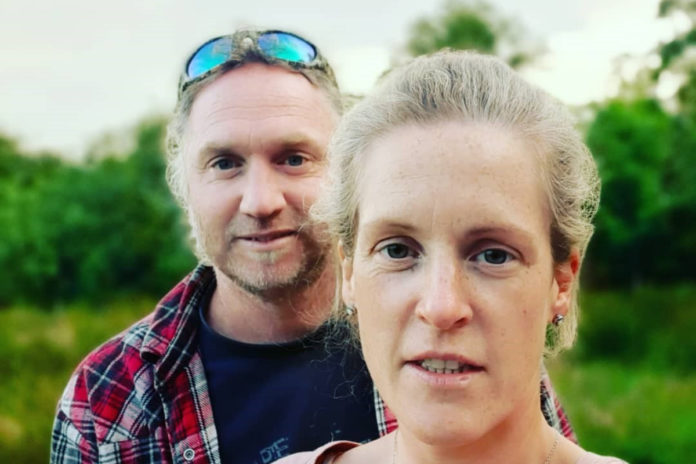In this week’s Farmer Focus, That’s Farming, speaks to Ger O’Sullivan of Rowan Hill Farm. We discuss building a farm from scratch, purchasing farmland during the Covid-19 pandemic and plans to establish an on-farm business, supplying produce direct to the public.
Ger O’ Sullivan (42) aims to become a full-time farmer with an on-farm business supplying produce direct to the public.
The Lombardstown, Mallow, Co Cork native embarked on his farming venture in 2016, renting a small 60-acre hill farm from his mother’s friend.
Building a farm from scratch
Last summer, in the height of the global Covid-19 pandemic, the self-employed landscaper purchased the land he now farms. Here he runs a mixed enterprise, with his wife Christine and children: Odhrann (15), Cúan (13), Fia (10) and Siún (7), which they established from scratch.
“Both grandparents farmed on my side, whilst Christine is from a non-farming background. My home farm is 40-acres,” he told That’s Farming.
“Our biggest challenge was the purchase of the farm and the unmanageability trying to start a farm from scratch with a limited budget.”
“We overcame this by sacrificing a lot in the last few years; no holidays, very few nights out, lots of long hours and hard work. In the end, we fulfilled our dream by owning our own farm, so it was all worth it.”
“When we bought the farm in Lombardstown, it was fairly run down as it had been leased for several years. We began by stock-proofing the property with three strands of electric fence.”
“Then, we started to train ewes (wild mountain Swaledales) immediately after shearing and in a short time, they began to respect the fence.”
Furthermore, they upgraded the 4-bay slatted house to accommodate ewes over winter with walk-through feeders dividing the bays and sheep feed barrier gates on the passage.
They bedded ewes with straw on slats and were satisfied with the results, with bedding staying dry and lameness almost non-existent.
Besides, they reroofed a dilapidated shed for extra housing and feed in early spring, which eased pressure during lambing season.
The family topped approximately half the farm as it was experiencing a rush infestation, which led to compaction, poaching and drainage issues. They then weed licked these fields, achieving “a good kill”.
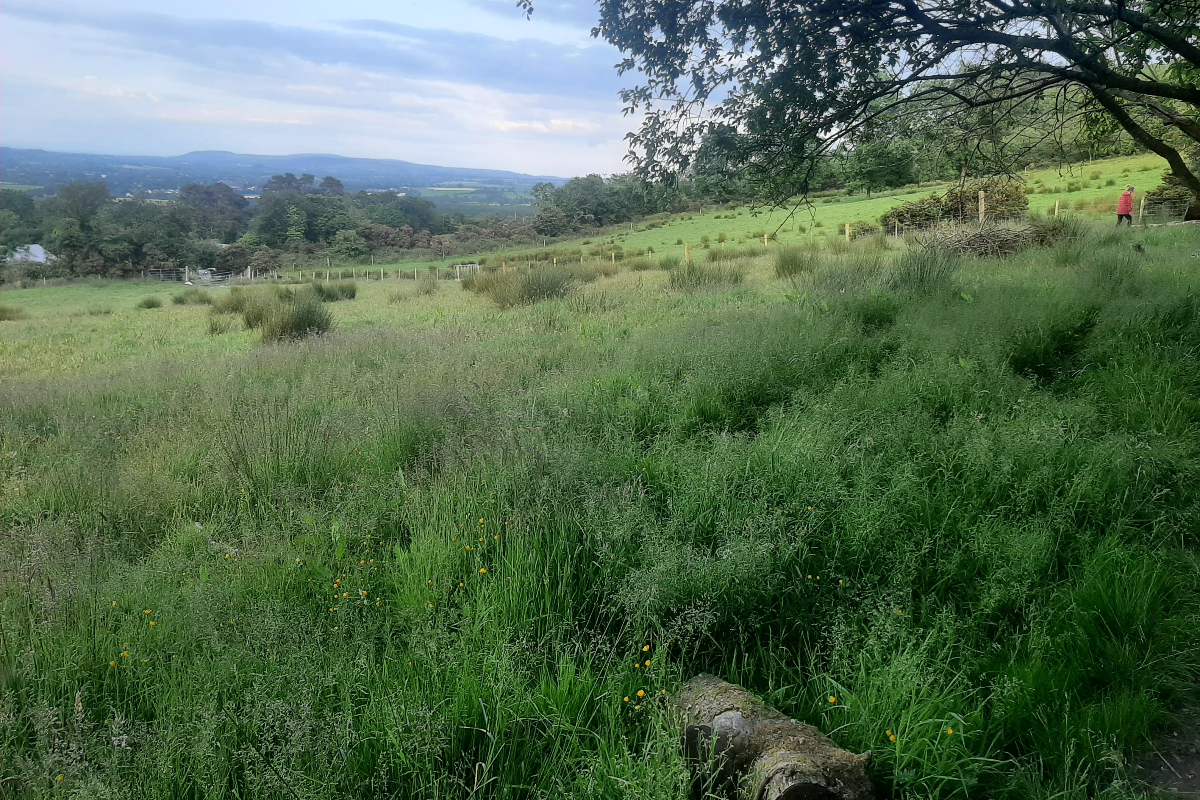
100-ewe farm
The family aim is to be as self-sufficient as possible whilst sustainably raising livestock.
They run primarily pedigree Swaledale ewes on the hill farm and crossed these to Blue Faced Leicesters last autumn to produce mules for replacements.
“The results are some super mules which we are pleased with so far. Also, we have some nice Belclare hoggets coming into the flock that we bought as ewe lambs last summer from a neighbour.”
“The aim will be to keep a prolific ewe put to a good quality terminal ram. This year, we are looking at putting Suffolks/Hampshire Downs to these ewes. Currently, the flock is at 100 ewes,” he added.
“Sheep is our main enterprise here now, and I suppose it is in me from both sides. My grandfather was a hill farmer in Glengarriff on the Cork/Kerry border, and I have many great memories of farming there with my father.”
“On the other side, I used to show pedigree Suffolks with my uncle in local shows,” he added.
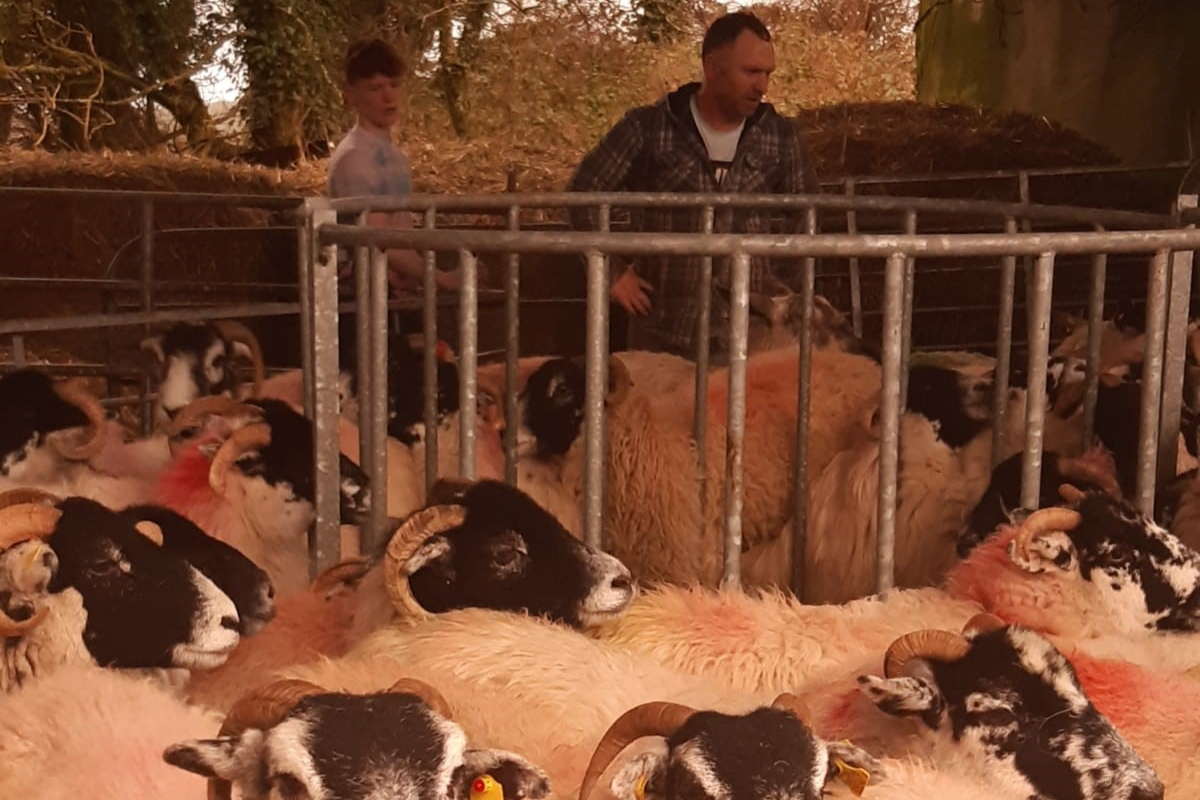
Buffalos
A recent addition to the enterprise came in the form of 7 Buffalo bull weanlings and calves.
“We bought these more of an experiment than anything. We spoke to a couple of local butchers, and they said they would be interested in finished buffalo. Therefore, we did not go into it blind like we sometimes do.”
“So far, they seem like nice, docile animals. Buffalos have an affinity for rushes, so we may have found a solution to our rushes problem.”
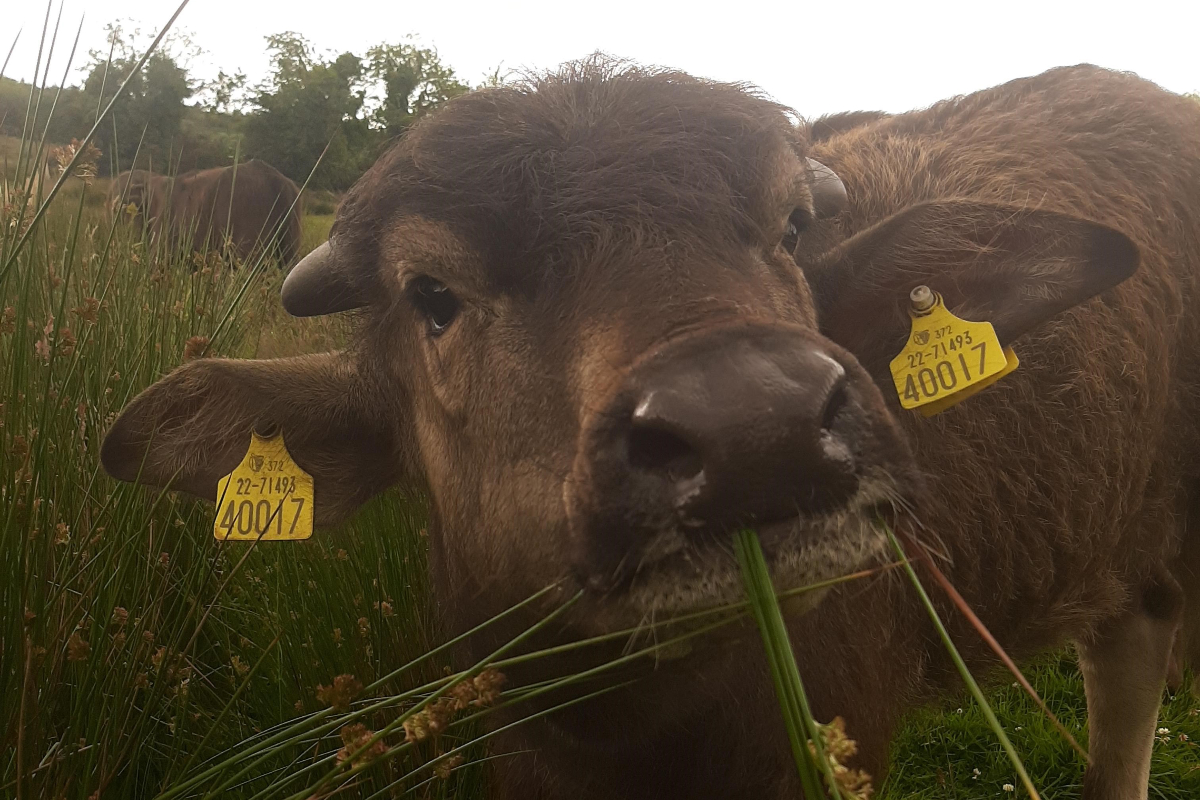
Pigs, bees, and poultry
Also, they keep some rare Oxford Sandy and Black pigs on the farm that have just furrowed in the last month.
“They are a nice quiet breed of pig that was on the verge of extinction but have been brought back from the brink and now have a few breeders in this country.”
“They are a hardy breed that is suitable for the outdoor life they have here on the farm. Most of the piglets have been booked already, and we will keep some for ourselves for both breeding and the table.”
As well as that, they have a small apiary with six hives of bees producing enough raw honey for the household.
They also keep various poultry for eggs and meat with 20 broilers processed and put in the freezer.
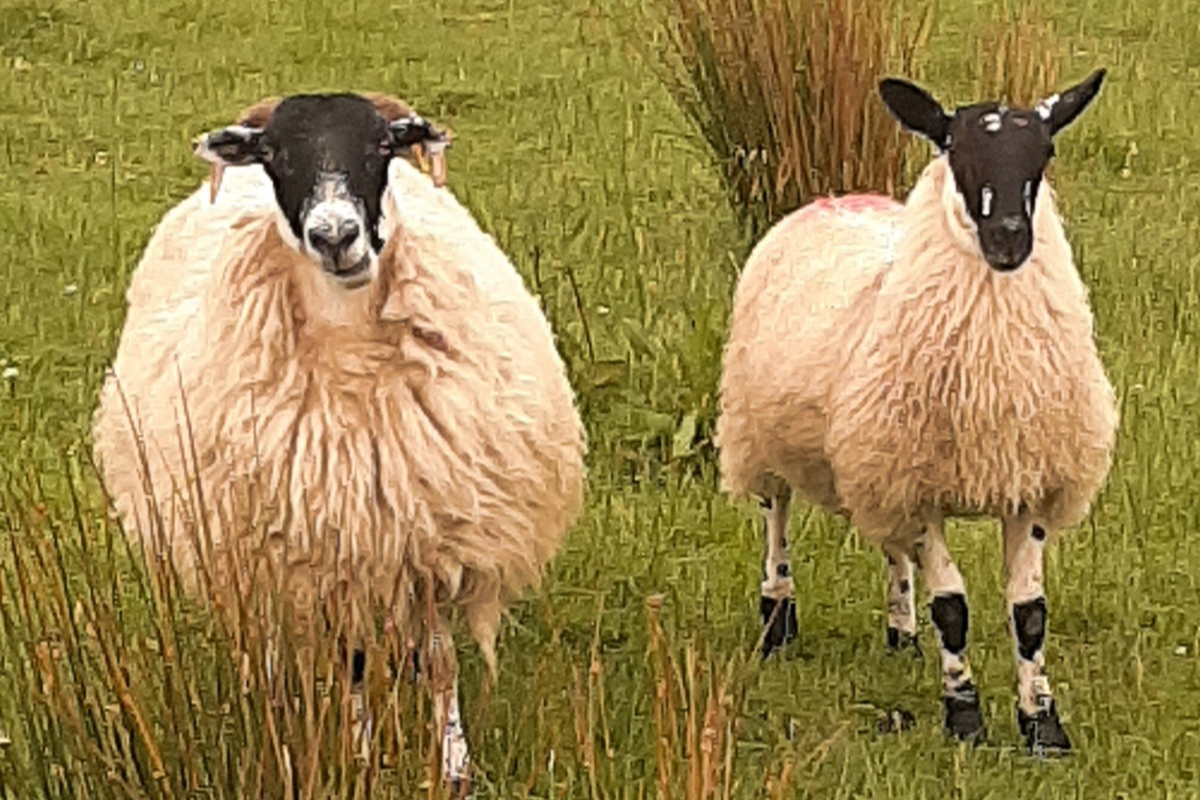
14-hour working days
“A typical day involves me getting up early to try to get the kids off to school. Depending on if I am working, Christine or I will feed the stock and do a walk-through of everything to check for lameness or flystrike this time of year.”
“After this, it is onto whatever project around the place or whichever sheep management that we need to do.”
“We have a couple of big tunnels that take up a good bit of time with weeding, watering or planting. Usually, unless something urgent crops up, we are in by 9 to give a hand to get kids to bed.”
“At the moment, 14-hour days seem to be the norm, 6 or 7 days a week as we try to get the farm into shape.”
“We farm conventionally in that we do use chemical fertiliser and some herbicide, but in reality, it is minimal. I suppose as beekeepers; we would be extra conscious of herbicide use on the farm.”
“Our tunnels, veg garden and pigs for the freezer get treated organically, though. We grow a lot of veg and fruit in the tunnels alongside a quarter of an acre of a veg garden.”
They also rear and butcher some pigs, broilers, turkeys and hope to have buffalo to add to their menu in the future.
“The long-term plan is to develop our free-range pork side of things and unisex the woodland that would not be useful for much else agriculturally.”
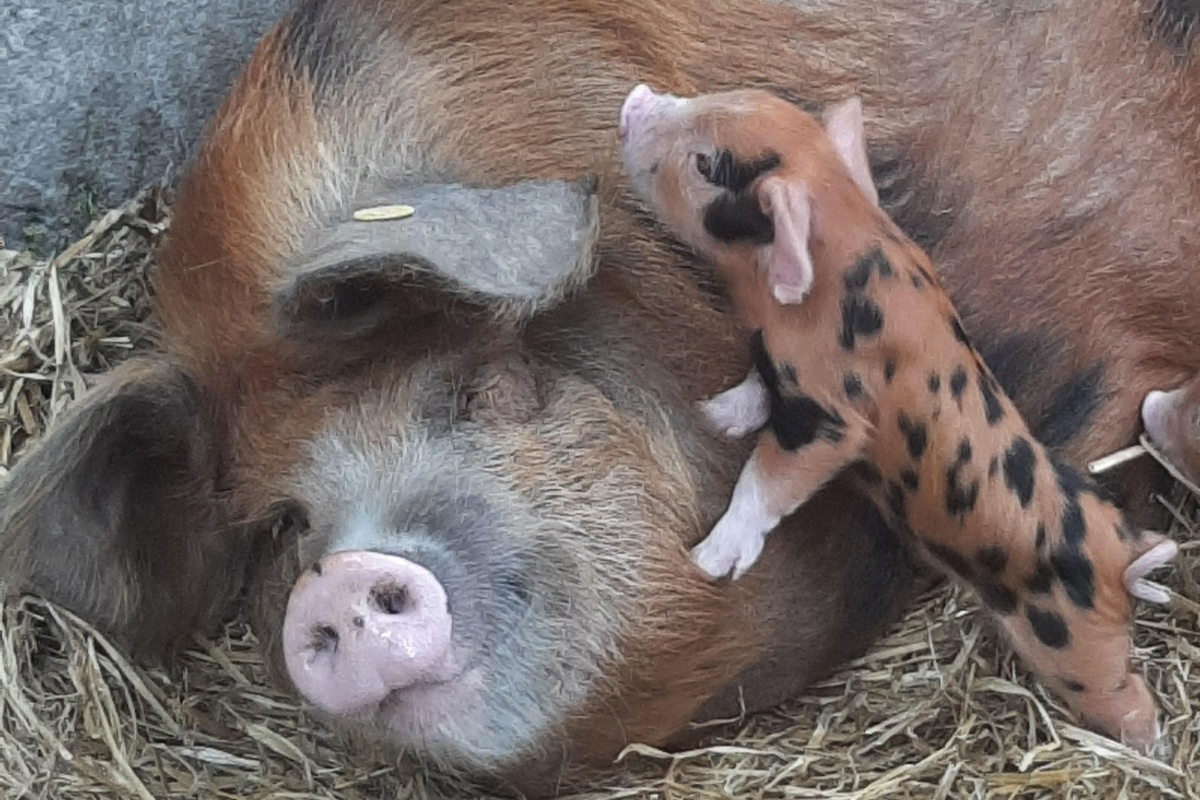
The farm’s future
They plan to sell their produce boxes that will include pork, lamb, beef veg and honey to the public. “We feel that for the farm to be viable and pay for itself, maximising the profit from each animal is paramount.”
“What makes us different from most, I suppose, is that we look to the past for how we want our farm to operate and base how we want to farm from my grandparent’s generation.”
“We feel that the farm should not only provide an income for the family but also provide the family with substance.”
“That is where the self-sufficient aspect comes from the farm fed the family, and that how we like to do things here. It is slightly old fashioned and simplistic, but the connection to our food is ever-present.”
“Christine and I both have a clear idea of how we want to live and farm. To friends and family, it may seem a bit backward and hard going.”
“However, the sense of satisfaction and accomplishment from sitting down and eating something you have grown or reared from seed or birth is why we do what we do.”
“We both love the connection with growing and raising our own food and watching new life arrive and flourish through our care. Also, the time we spend on-farm with family is creating some fantastic memories and experiences for our kids.”
The industry’s future
Short-term goals include building up soil fertility, creating a prolific, healthy flock and developing a sheep handling unit. “My wife is very keen to get a milking Jersey, so that is most likely our next purchase,” he added.
“The future of farming in Ireland is going to have a green twinge to it. With the way the new REAP scheme is geared, a results-based environmental orientated future lies ahead for many Irish farms. I do feel, however, that if they want these schemes to be successful, payments will have to be increased.”
“We have had a busy 12 months here, but the amount we have achieved is phenomenal. It is imperative to focus on the positives as sometimes there can be a lot of negativity around,” he concluded.


